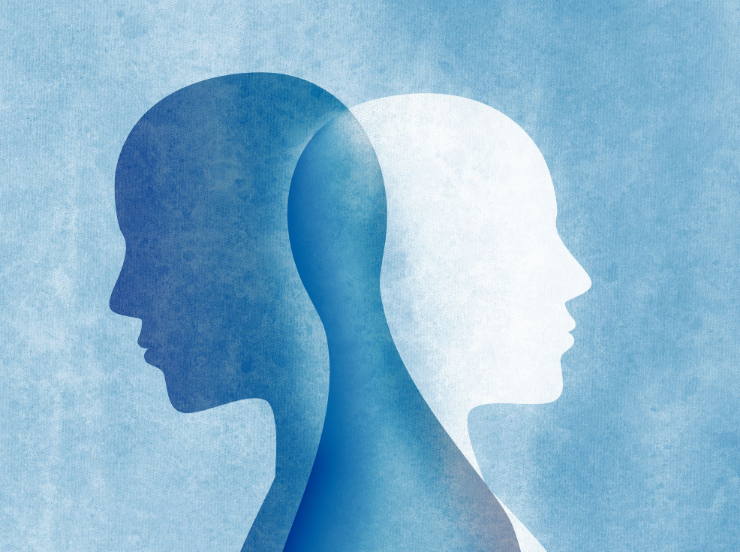Mental health disorders affect both men and women of every ethnicity. In some cases, people may be living with several types of mental disorders despite these disorders affecting their thoughts, feelings, and behavior.
In this article, we will take a closer look at several types of mental health disorders.
Types of Mental Health Disorders
Mental health disorders are illnesses that create abnormalities in the way you think, feel, or behave. These abnormalities affect working and personal relationships and can sometimes create unsafe living environments. To qualify as a psychiatric diagnosis, there must be functional impairment related to the disorder within the last year. However, many have experienced unpleasant effects for longer than a year.
The Center for Disease Control reports one in five Americans meet the criteria for a mental health disorder in a given year. That’s over 19% of the population. There are over 200 diagnosable disorders to date.
Here are 10 types of mental health disorders.
Depression
Depression affects millions of adolescents and adults across America and globally. The symptoms can vary for each. Some may feel sadness and become tearful for no apparent reason. Some find themselves sleeping more than usual, with a feeling of dread each time they think about starting their day.
Severe depression may leave some feeling hopeless or having thoughts of suicide.
Ketamine therapy is a new treatment we offer in our office that research has shown alleviates many negative symptoms of depression and thoughts of self-harm.
Anxiety
Anxiety disorders can include a wide range of symptoms, from generalized worry to panic attacks. Fear, dread, inability to sleep, post-traumatic stress, nightmares, racing thoughts, and phobias are further symptoms associated with anxiety disorders.
A mental health specialist can assess your symptoms to determine the specific type you may be struggling with.
ADHD
ADHD stands for Attention-deficit hyperactivity disorder. It used to be called ADD, but since hyperactivity (what the “H” stands for) was found to present without inattention in certain people, the disorder was renamed in recent years.
Impulsive behaviors often accompany other ADHD symptoms.
You may hear that ADHD is found mostly in kids, but 50% of children do not outgrow it, but instead turn into adults with primarily inattentive symptoms.
Insomnia
Insomnia is the inability to fall asleep or stay asleep. Even if you can fall asleep, it can be difficult to fall back asleep when you wake up during the night. Insomnia is a disorder that can be related to other mental health illnesses like depression and anxiety.
Working with a mental health professional to learn better sleep habits or take certain medications can significantly improve symptoms. Also, once you get to the root of the cause of your insomnia, it becomes much easier to manage.
Addiction & Substance Abuse
Addictions to prescription or illegal drugs and alcohol are disorders listed as mental health disorders in the Diagnostic and Statistical Manual, 5th edition (DSM 5). Depending on your drug of choice, you can experience severe, sometimes life-threatening symptoms.
Most addicts and substance abusers also struggle with a co-occurring disorder. Meaning, they also have depression, anxiety, bipolar, or another untreated illness on top of addiction.
The more treatment you can receive to treat addiction, the better. From medical detox to outpatient counseling, it is beneficial to seek support.
Bipolar Disorder
Bipolar disorder refers to the two moods involved with the illness, both on the opposite ends of the spectrum from the other. On one side, depression. Your bipolar depression can vary from being unable to get out of bed to feeling like you have the blues.
In bipolar disorder, your depressive symptoms cycle to the other end of the spectrum, mania. Mania is sometimes seen as positive because you have a lot of energy; you accomplish a lot. However, you may also participate in risky behaviors that can be fatal. Then, when you cycle back into a depressive mood, the crash can be devastating to you, your family, and even your employment.
Schizophrenia
It is not known precisely how a person develops schizophrenia, but it typically considered to start with “genetic predisposition with environmental triggers.”
If you have schizophrenia, you may experience moments that are out of touch with reality. You may have hallucinations, delusions and may not be able to communicate appropriately.
PTSD
PTSD or post-traumatic stress disorder can happen if you have experienced traumatic events. War combat, sexual abuse, and natural disasters are examples of traumas that can lead to PTSD.
Symptoms of PTSD include severe anxiety, nightmares, flashbacks, and the inability to control your thoughts about the trauma. You may feel overwhelmed by thoughts and memories surrounding the trauma you survived.
There is a new treatment method showing significant progress with PTSD. It is called EMDR or eye-movement desensitization and reprocessing. It must be done by a licensed EMDR specialist, however.
Eating Disorders
Anorexia, bulimia, and binge-eating disorder are the most common eating disorders. Many people with eating disorders feel out of control in other areas of their life. The one thing they can control is the food that enters or exits their body.
With anorexia, calorie restriction is the main objective. With bulimia, a person will binge eat and ingest enormous amounts of calories. Once they are done binging, they will feel guilty and the overwhelming need to purge the food they consumed.
Binge-eating disorder involves consuming large amounts of food but without the purging. The guilt is severe, however.
Borderline Personality Disorder
A borderline personality disorder is said to make a person unable to maintain positive social relationships. You become emotionally unstable, impulsive, and your self-image is damaged.
Your moods may range from having a fear of abandonment to explosive anger outbursts. Moods like this are typically uncontrollable. Severe borderline can leave you feeling paranoid.
The Good News
These types of mental health disorders are treatable. Doctors and mental health professionals can offer multiple levels of treatments, from medications to outpatient talk-therapy sessions.
You can even start improving your mental health disorder today by reaching out for help. You don’t even have to leave your home with many treatment centers operating telehealth services.
So, hop online and start your journey to healing and wellness with a mental health center in your area.


